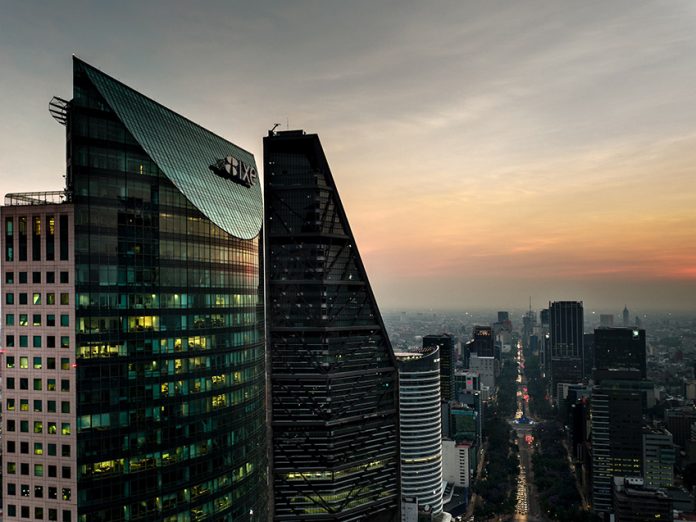A significant appreciation of the peso, a steady decline in inflation, Tesla’s announcement that it will build a gigafactory in Nuevo León, the cancellation of Chinese lithium concessions, record-breaking remittances, cargo delays at the Mexico-U.S. border.
It’s been an eventful year in business and economic news in Mexico, where nearshoring isn’t just a buzzword, but also represents a “historic opportunity” for the world’s 14th largest economy to secure strong growth in the years ahead and guarantee economic well-being for millions of citizens — provided the country can fully capitalize on its much-touted potential.
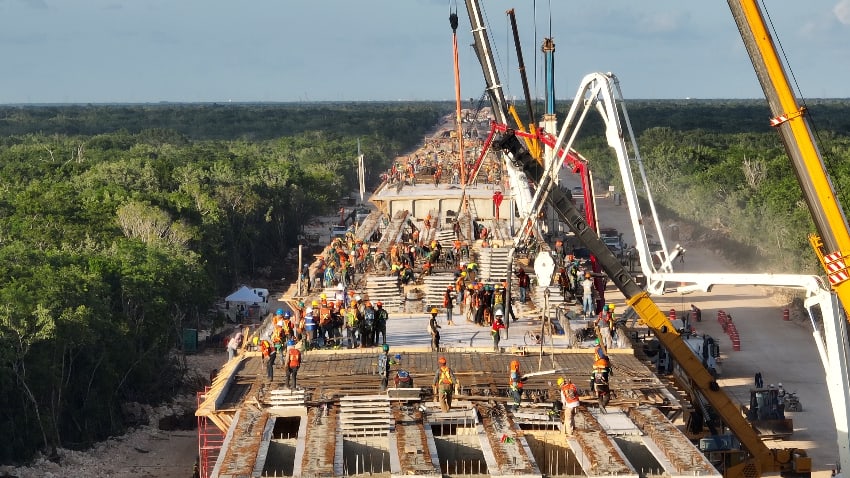
At Mexico News Daily, we’ve closely followed business and economic developments this year, reporting on a wide range of data, scores of investment announcements, events that have crimped the economy and hurt investor confidence, and the views of numerous organizations and people on the country’s future prospects.
As 2023 draws to a close, here’s a look back at 10 of the biggest business and economy stories in Mexico this year. Many of the developments, events and issues outlined below had a significant impact on the economic situation in Mexico this year, and in some cases will help shape the future the country will face in the years to come.
The ‘super peso’ refuses to be beaten down
Perhaps the biggest economic story of the year has been the appreciation of the Mexican peso, which was trading at about 19.5 to the US dollar at the start of 2023 and 17.35 at the close of markets on Friday Dec. 8 — an improvement of around 12%
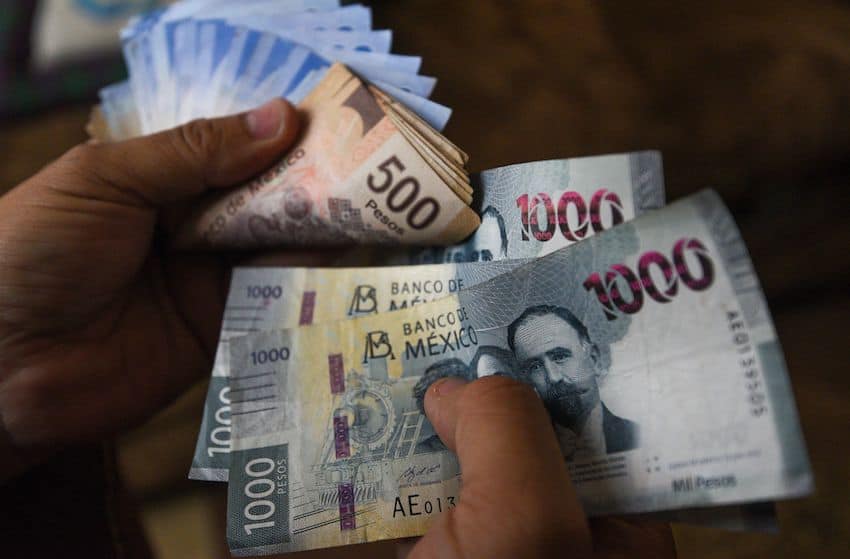
The peso hit an almost eight-year high of 16.62 to the greenback in late July, and has mostly remained below 18 to the dollar since then.
Analysts have cited a range of factors for the peso’s impressive run this year, including strong incoming flows of foreign capital and remittances, and the broad gap between the Bank of Mexico’s record high interest rate (11.25%) and that of the United States Federal Reserve (5.25%-5.5%).
There are a range of pros and cons to a strong peso, but President López Obrador has chosen to focus on the former, and even claimed partial credit for the currency’s appreciation this year.
“There are some disadvantages [to a strong peso], but there are more advantages,” he said at a recent press conference.
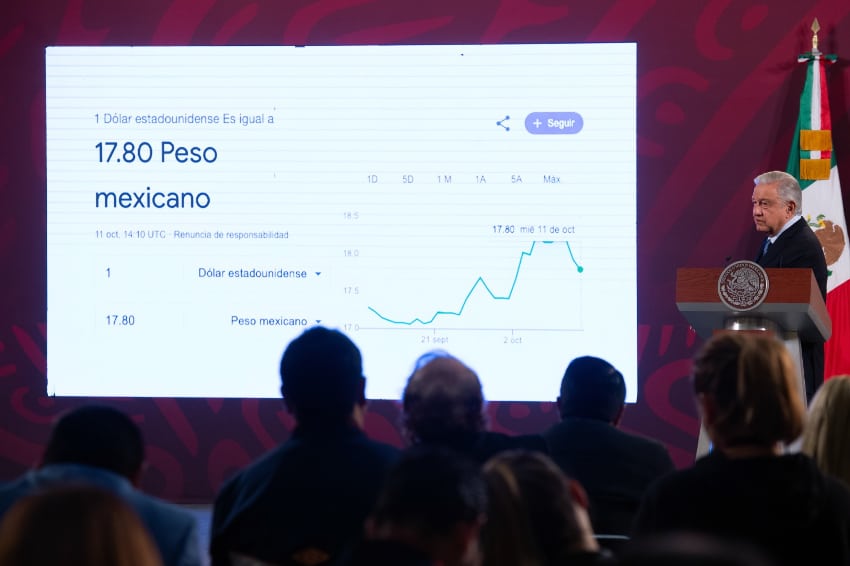
“We have a percentage of public debt contracted in dollars. So, when the peso strengthens, our debt goes down,” AMLO — who has cited the government’s competent economic management as a major factor in the currency’s appreciation — said at another of his early-morning pressers.
‘Heroes’ send billions home, but exchange rate hurts remittance value
Mexicans working and living abroad sent US $52.89 billion to Mexico in remittances in the first 10 months of the year, a 9.4% increase compared to the same period of 2022.
Mexico is thus on track to beat the record set in 2022 for annual remittances receipts.
Millions of Mexican families receive remittances — mainly from the United States — and their use of that money helps stimulate the national economy.
However, the strength of the peso this year has softened the impact of money sent home by Mexicans working abroad.
With a stronger peso, the recipients of remittances have less money to spend in Mexico, unless remitters increase the amounts they wire to offset the strengthening of the local currency. There is evidence that is occurring.
“Before I used to send $100 [per week to my family in Mexico City],” Eric Vasquez, a 44-year-old New York City restaurant employee told CNBC in October. “Now I have to send $130, $140 to cover expenses.”
While AMLO frequently describes Mexican migrants as “heroes” in recognition of the substantial support they provide to the economy — remittances were equivalent to 4.5% of GDP last year — not all the money sent to Mexico comes from hardworking people with legitimate jobs. There is evidence that some of the funds are linked to drug trafficking, a Mexican think tank reported in March.

Inflation falls, but remains above the central bank’s target
The increase in inflation last year was probably the biggest economic story of 2022. The headline rate peaked at 8.7% in August and September of last year, and was still very high at 7.82% in December 2022.
While inflation ticked up to 7.91% in January, the headline rate subsequently declined for nine consecutive months to reach 4.26% in October, before increasing slightly to 4.32% in November.
Despite the sustained decline in inflation throughout most of the year, the headline rate remains above the Bank of Mexico’s 3% target.
Consequently, the central bank has maintained its record high 11.25% benchmark interest rate since it was raised to that level in March.
An initial cut is considered likely in the first or second quarter of 2024, provided inflation returns to the downward trend seen throughout most of 2023.
Tesla generates excitement with gigafactory announcement
Four weeks before the central bank raised its key rate to 11.25%, the world’s richest person made a significant announcement of his own.
Tesla CEO Elon Musk announced March 1 that the electric vehicle manufacturer would build a “gigafactory” in Santa Catarina, a Nuevo León municipality just west of Monterrey.

Construction has not yet begun, but Musk said in October that an initial phase of the project will begin in early 2024.
Hundreds of foreign companies have announced investments in Mexico this year, but none has created as much buzz as Tesla.
While the Austin-based company hasn’t disclosed how much it intends to invest in its new plant, estimates are in the range of US $5-10 billion.
Nuevo León Governor Samuel García claimed in September that Tesla and its suppliers would invest $15 billion in the northern border state.
Is Mexico on the verge of a nearshoring boom?
As mentioned above, Tesla is one company on a long list of foreign firms that intend to establish a presence in Mexico in the near future. During the course of 2023, many others announced that they are expanding their existing operations here.
It’s all part of the growing nearshoring phenomenon, which Mexico News Daily has covered extensively this year. (Read a couple of our analysis articles here and here.)
Unsurprisingly, foreign direct investment (FDI) is on the rise, reaching a record high of almost US $33 billion in the first nine months of 2023. FDI is poised to increase further in coming years as the significant amount of investment announced in 2023 begins to flow into the country.
While there is no shortage of people who are optimistic about Mexico’s nearshoring prospects — Governor García, for example, said in March that annual growth of 10% is possible if the opportunity is seized — few have endorsed the country as an investment destination as strongly as JPMorgan Chase CEO Jamie Dimon.
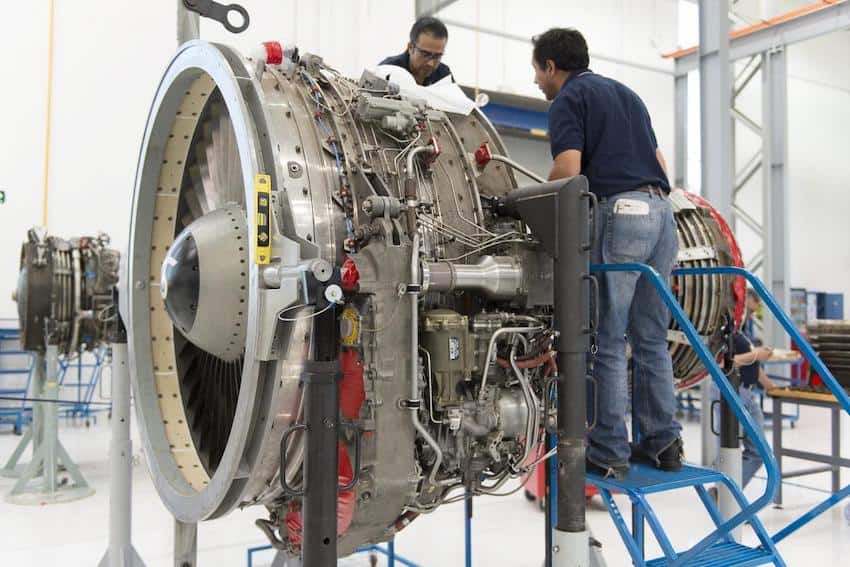
“I think it’s one of the great opportunities. … If you had to pick a country … [Mexico] might be the number one opportunity,” he said in November.
However, some experts believe that Mexico runs the risk of missing its nearshoring opportunity, or at least not taking full advantage of it, for a variety of reasons, including government policy, security concerns and deficient infrastructure, as we reported in September.
Adding her voice to the debate, Foreign Affairs Minister Alicia Bárcena expressed doubt in November that the nearshoring opportunity is well understood in Mexico and warned that countries such as Vietnam could position themselves as more attractive options for companies that are seeking to relocate, especially from China — which is increasing its investment in Mexico itself.
The federal government, it should be noted, announced a range of tax incentives in October that are aimed at boosting nearshoring investment in Mexico.
Economic growth significantly higher than anticipated
The OECD predicted in November 2022 that the Mexican economy would grow by just 1.6% this year. The 38-member intergovernmental organization forecast last week that GDP will expand 3.4% in 2023.
Its latest forecast came after data showed that the economy grew 3.5% in annual terms in the first nine months of the year.
One driver of economic growth this year has been exports, which were worth a record high of $493.51 billion in the first 10 months of the year.
On another positive note, Mexico was the United States’ top trade partner in the first nine months of 2023, according to U.S. government data, with two-way trade worth almost US $600 billion.

(Read more about Mexico’s impressive export and FDI growth in recent decades here.)
The booming south
Another reason why GDP growth has been higher than expected this year is the impressive economic performance of Mexico’s historically disadvantaged south and southeast.
Data published by the Bank of Mexico showed that economic growth in that part of the country easily exceeded growth in three other more industrialized regions of Mexico in the first half of 2023.
Supercharged by public and private construction projects, annual growth in the southern region made up of Campeche, Chiapas, Guerrero, Oaxaca, Quintana Roo, Tabasco, Veracruz and Yucatán was 6% in the second quarter of the year and 4.6% in Q1.
Projects in Mexico’s south and southeast including the Maya Train railroad, the Tulum airport and the Isthmus of Tehuantepec trade corridor all helped boost construction sector growth, which drove overall growth in the first half of the year.

President López Obrador has long asserted that the construction and operation of the Maya Train railroad — which is set to partially open next week — will spur economic development in Mexico’s long-neglected south.
There are also high hopes for the trade corridor between Salina Cruz, Oaxaca, and Coatzacoalcos, Veracruz, with Economy Minister Raquel Buenrostro saying in July that it could contribute to as much as 5% of Mexico’s GDP once operational.
The project, which includes a modernized railroad linking Mexico’s Pacific and Atlantic coasts, has been touted as an alternative to the Panama Canal.
Energy dispute still unresolved
The federal government’s nationalistic energy policies have been identified as one impediment to greater incoming flows of investment.
The United States and Canada challenged the policies under the USMCA in July 2022, arguing that they discriminate against U.S. and Canadian companies that operate in Mexico. More than a year later the issue has still not been resolved.
The U.S. has pressured Mexico to address its concerns, but appears reluctant to request the establishment of a dispute settlement panel to deal with the matter.
López Obrador, a fierce critic of the 2014 energy reform that opened up Mexico’s energy sector to private and foreign companies, has not indicated that he is willing to change policies that favor the state oil company Pemex and the Federal Electricity Commission.
The failure to resolve the dispute this year is significant as it perpetuates uncertainty in the energy sector, and uncertainty — as everyone knows — is never good for investment.
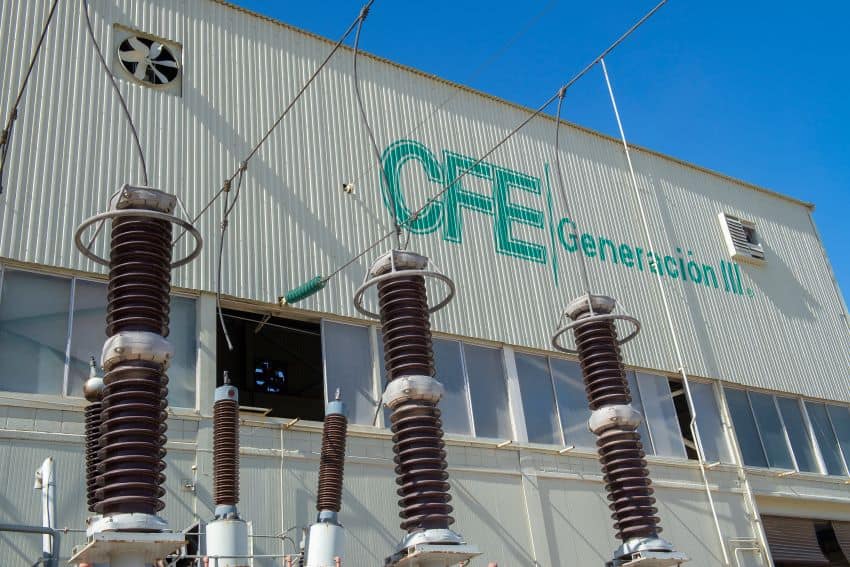
We’ll be watching closely to see how the issue plays out in 2024 — an election year in both Mexico and the U.S.
Among other sources of economic tension between Mexico and the United States in 2023 was a feud over genetically modified corn that is set to be resolved by a dispute settlement panel, and the temporary takeover by the Mexican navy in March of a U.S. company’s property on the Quintana Roo coast.
United States Secretary of State Antony Blinken said that the takeover could have a “chilling effect” on future U.S. investment in Mexico.
A lithium fight looms
Lithium, which seems to be becoming more coveted by the day, was nationalized in Mexico last year. The initial understanding was that private companies that had already been granted concessions to mine the alkali metal would be allowed to do so, although López Obrador said in April 2022 that such contracts had to be reviewed.
Fast forward to September this year, and reports emerged that the federal government had canceled mining concessions held by Chinese company Ganfeng Lithium for a large lithium reserve in Sonora. AMLO subsequently said that the concessions were still being reviewed, but Ganfeng announced in late November that the government had confirmed the cancellation.
The CEO of a Ganfeng subsidiary that is managing the Sonora project said in October that Ganfeng would defend its right to the concessions in Mexican courts.
“We do not believe that it’s legally valid” to cancel the concessions, said Peter Secker, CEO of Bacanora Lithium.
“… We’ve exceeded all the requirements for spending on the licenses,” he said, rejecting the government’s apparent grounds for canceling the concessions.

The battle that appears to be looming has the potential to have a significant impact on Mexico’s nascent lithium industry. Resolution could come via a decision to enter into a joint venture to mine the Sonora reserve, in which Ganfeng and the federal government, via the state-owned lithium company Litio para México, would work together on the project.
The former has expressed its willingness to participate in such an arrangement, but the government, to date, has not.
Cargo delays at the U.S. border take heavy economic toll
Another major story we covered in 2023 was cargo delays at the northern border.
On repeated occasions this year, the Texas government ramped up inspections of northbound freight trucks at various border crossings, causing lengthy delays for truckers seeking to enter the Lone Star state.
The Economy Ministry said in May that that the inspections were causing delays of eight to 27 hours for northbound freight trucks, as well as losses in the millions of dollars for both Mexican and U.S. companies.
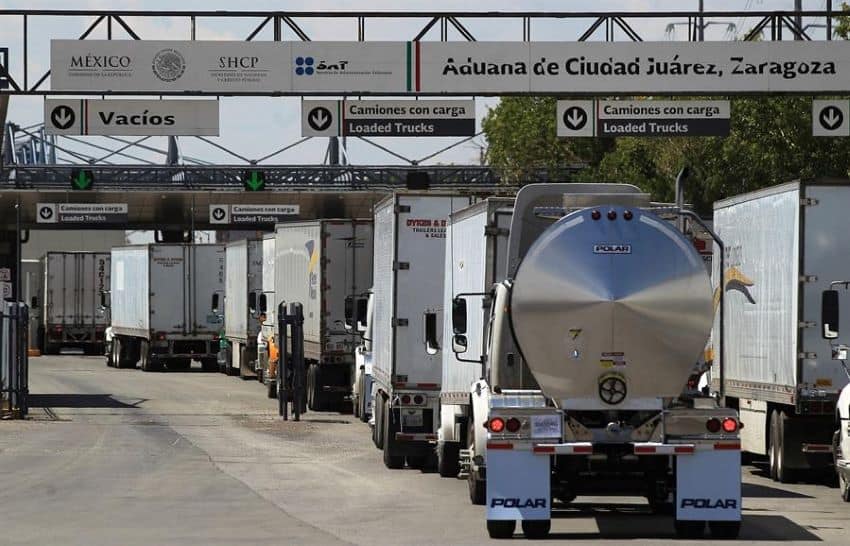
The actions implemented by the Texas government “are motivated by an anti-Mexican vision that is far removed from the social, cultural and economic integration between Mexico and Texas,” the ministry said.
At one point in early October, cargo worth more than US $1.5 billion was held up at the border due to stringent inspections on the U.S. side of the crossing between Ciudad Juárez, Chihuahua, and El Paso, Texas, according to Mexico’s National Chamber of Trucking.
The stated aim of the strict inspections carried out by the Texas Department of Public Safety was to prevent the entry to the U.S. of undocumented migrants and narcotics.
Governor Greg Abbott, an outspoken critic of U.S. President Joe Biden’s alleged failure to secure the border, is well-known for his hardline stance on irregular immigration.
With migration set to be a significant issue in the upcoming presidential election in the United States, will we see more economically painful truck inspections at the Mexico-Texas border in 2024?
By Mexico News Daily chief staff writer Peter Davies (peter.davies@mexiconewsdaily.com)
